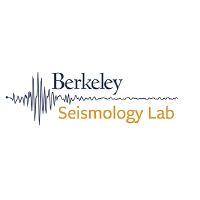The California Earthquake Early Warning System marries a smartphone application with traditional alert and warning delivery methods such as Wireless Emergency Alerts (WEA). The system uses ground motion sensors from across the state to detect earthquakes before humans can feel them and notifies you in real time.
Earthquake Early Warning (EEW) systems use science, state-of-the-art ground motion monitoring, as well as new and existing alerting methods to deliver warnings to people via cell phones before the strongest shaking arrives. Seconds to tens of seconds of alert can provide opportunity to take life-saving actions such as Drop, Cover, and Hold On and put devices into various forms of a safe mode. The speed of the alert will vary depending on one’s distance from the origin of the earthquake. The closer one is to origin, the quicker one will receive the alert. In some cases people may receive an alert once they feel shaking or after an earthquake passes.
 How Can Just a Few Seconds Help
How Can Just a Few Seconds Help
- Public Warning – Alert individuals to take protective actions such as Drop, Cover, and Hold On.
- First Responder Mobilization – Open fire station doors for rapid deployment of emergency response equipment and personnel.
- Health Care – Notify medical providers to stabilize and/or stop delicate procedures and maintain critical medical facility operations.
- Utility Infrastructure – Safeguard energy sector grid and other utilities infrastructure for strong shaking with warning alarms and automatic controls to prevent combustions, flooding, and loss of water distribution systems.
- Mass Transit Systems – Prevent fatal collisions or derailments by automatically slowing and/or stopping trains, clearing bridges, and diverting inbound airport traffic.
- Workplace Safety – Employees take protective actions, initiate elevator recall procedures to ground floor, place sensitive equipment in safe mode, secure hazardous materials, and halt production lines to reduce damage.
The Science

- In an earthquake, a rupturing fault sends out two different types of waves. The fast-moving P-wave is first to arrive, but the damage is caused by the slower S-waves and surface waves.
- Sensors detect the P-wave and immediately transmit data to an earthquake alert center where the location and size of the quake are determined and updated as more data becomes available.
- A message from the alert center is immediately transmitted to users.
Limitations
- Earthquake early warning is not earthquake prediction.
- The alert cannot come before the earthquake starts.
- The goal is for people to receive the alert before they feel shaking.
- People may receive an alert before, during, or after shaking arrives at their locations.
- The length of the warning depends on a number of factors. The factors include on how close the seismic sensors are to each other, how quickly the data moves through the system (we are working to speed it up every day), how big the earthquake is, how deep it started in the earth and whether it moved through sand, solid ground or bed rock.
- The California Earthquake Early Warning System is based on innovative technology that will improve over time.
- In rare circumstances, you may receive a ShakeAlert when there was no earthquake.






